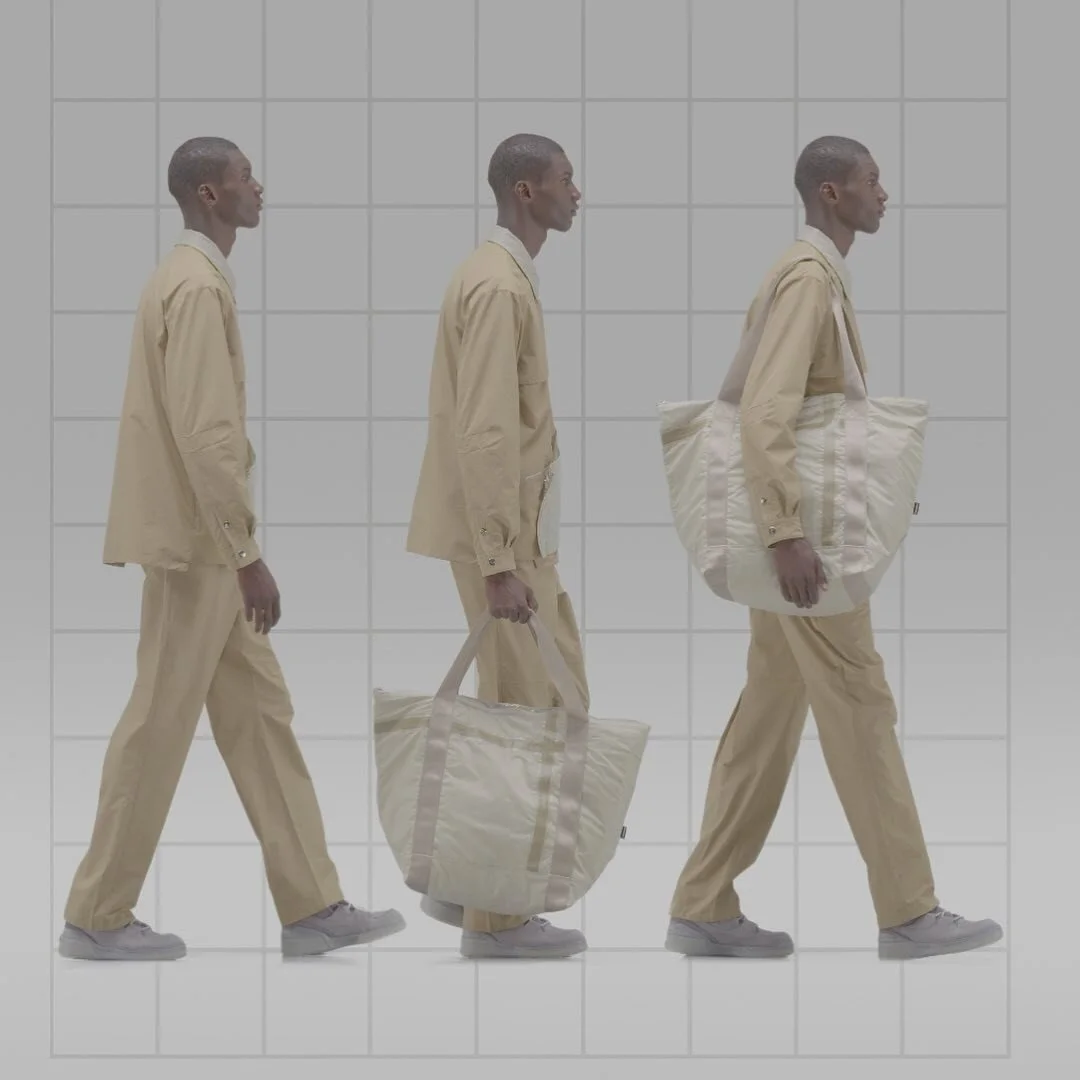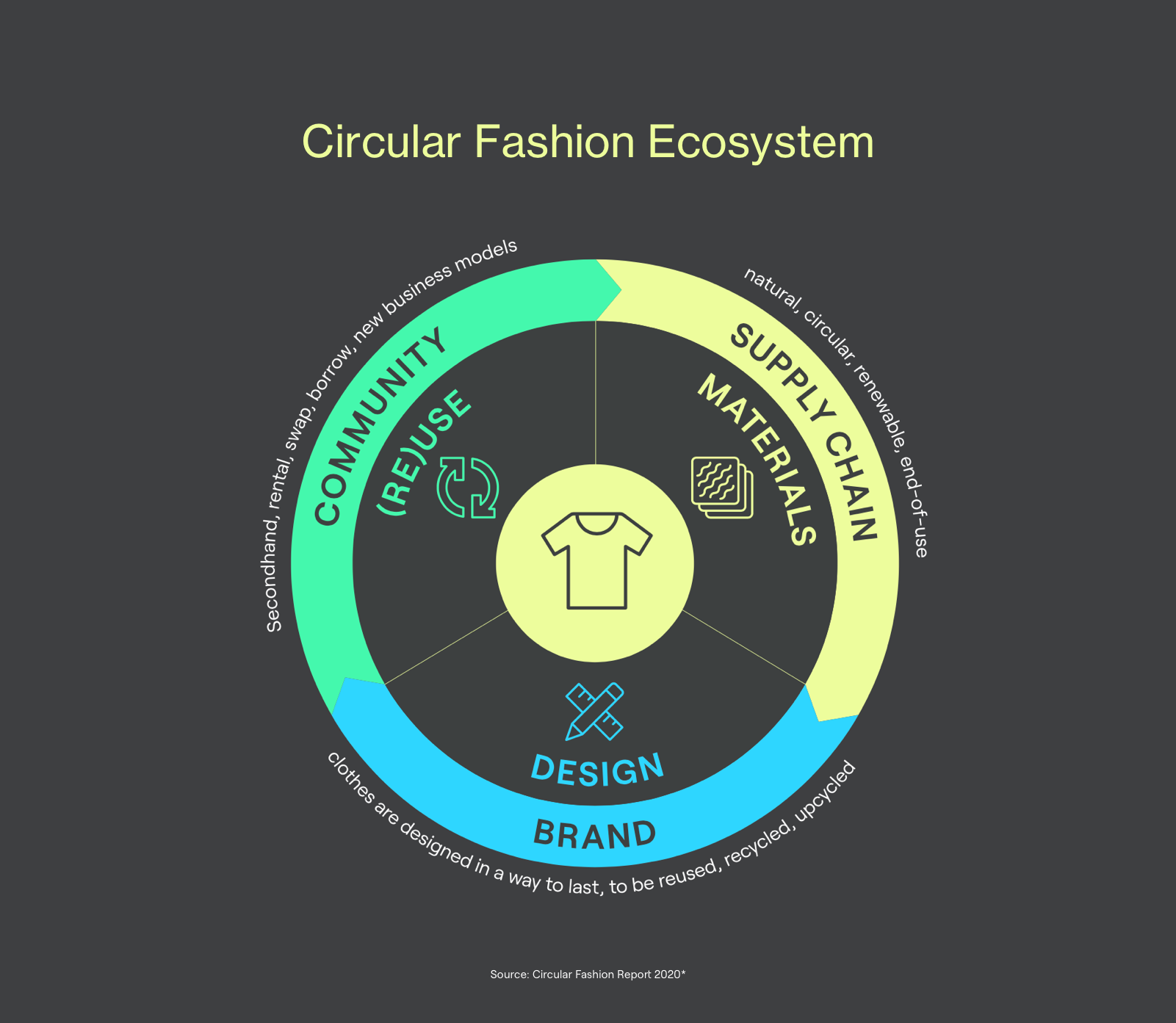
Image Credit → The OR Foundation
SUSTAINABILITY • 31 May 2021
Words by Laura Pitcher
What Is Circular Fashion?
Here’s what it truly means to create a circular fashion industry.
If you’re interested in sustainability, you may have heard of the term “circular economy” or “circular fashion.” With circular rapidly becoming a buzzword in the industry, circular fashion refers to an industry where every part of the life span of a garment is cyclical.
While most would agree circularity in the fashion would be an ideal solution to the industry’s waste issues, it can feel like a largely unattainable goal. Here’s why a circular industry will be pivotal in creating a sustainable future for fashion and how, with the help of digitization, it’s possible.
Defining Circular Fashion
As circular fashion is a new industry, it’s still yet to be clearly defined, something that will be key to preventing it from becoming another greenwashing tactic. In fact, in September 2020 the Circular Fashion Summit team surveyed more than 50 CFS catalysts from fashion and sustainability in 22 countries to learn how they defined circular fashion. Respondents gave very different answers, including prolonging product lifecycle, responsible production, and creating new business models.
At its core, circular fashion must include moving away from the extreme waste of the linear model, including mass production and consumption. “In Circular Economy, waste and pollution are designed out; products and materials are kept in use, and made from safe and recycled or renewable inputs.” stated by Ellen MacArthur Foundation. With 85% of textiles going into landfill each year, the call for circularity must involve ultimately phasing out waste and pollution from raw materials, investing in circular or renewable materials, extending the use-phase of a garment for as long as possible (through reuse, swapping, and repairing), and closing the end-of-life for a garment by upcycling or recycling it back into raw materials.
“Circular Fashion addresses a series of collaborative inputs enabled by a digitized and connected system, where circularity in Material, Design, and (re)Use are interlinked .”
— Eliana Kuo for Year Zero: Circular Fashion Report 2020
There is No Circular Fashion Without Digitization
The shift towards digitization across all industries is also true for the fashion industry. This is something that can be embraced in the shift towards a circular model. While traditional retail centered the store, our current digital consumption model prioritizes fast consumption, with overnight deliveries available on Amazon. In a digitized and connected (Internet of Things) circular economy, the focus would no longer be on the store or customer, but the products, connected via RFIDs and IoT care labels with unique QR codes, that enable product ownership and impact data to be collected along the product life cycle. By shifting this focus to the product, a customer-centric approach driving mass consumption can be replaced by an ownership-based circular retail system. All this never before collected information is enabling circular business models such as take-back programs for resale, rental, swapping and recycling.
Another important disruption is coming from the multi billion dollar yet emerging digital fashion market, enabling product waste reduction and lower shipping emissions for sample production via 3D modeling. Other applications can drastically reduce impact from manufacturing and shipping products destined for social media and digital marketing through AR technologies and digital try on systems.
video → mx—R
The Potential Of Circularity in the Fashion Industry
While no one knows the true potential of a circular fashion industry (yet), our latest CFS report, compiled by a group of industry and academics including PwC, sustainable consultancy Anthesis, Rödl & Partner law firm, Startupbootcamp, ESSEC Business School, Wageningen University & Research and circular fashion blockchain provider lablaco, estimates that it could be worth $5 trillion.
This estimate factors in the urgency of the climate crisis and the fact that the current market value is made up of the existing $3 trillion global fashion industry, including the $6 billion virtual fitting room market, $16 billion 3D-printing market and the growing secondhand sector, with the U.S. secondhand clothing market alone projected to more than triple in value in the next 10 years.
The fashion industry has only just started to explore its potential for product reuse, but the digitized revolution across other industries proves this change can happen swiftly (think of the rise of subscription-based services like Spotify and Netflix). With the further digitization of fashion arguably inevitable, the goal then becomes to make fashion traceable, transparent and more sustainable (aka circular).
video → Nike Circular Design Guide
“Circular Fashion is about moving away from a linear model of take, make, dispose and moving toward a new, regenerative model that can help us meet the UN Sustainable Development goals and revolutionize our consumption and production patterns to achieve a more sustainable world.”
— Susan Harris, Technical Director | Anthesis

Discover More
Learn more about Circular Fashion insights from on Year Zero: Circular Fashion Report 2020.




